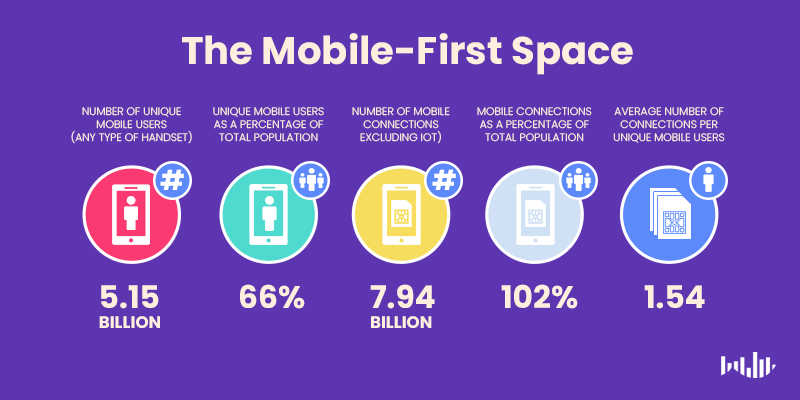The Advantages of Conducting Mobile Surveys

Mobile surveys have revolutionized the market research space. These useful tools for understanding a target market help uncover revenue and scaling opportunities for all kinds of businesses.
As one of the most tried and true methods for unlocking your target customers’ desires and needs, surveys not only allow you to understand your customer base but also inform you on the overall landscape of your industry.
This is because you can formulate questions that are not necessarily about your own product/service, but rather a similar one, an innovation to an existing offering or an entirely new one.
The tactic of surveying a pool of consumers is not new, although it has undergone a revolution, from the snail mail surveys of the ‘90s, to the phone surveys of the ‘00s and today’s internet surveys.
Nowadays, mobile surveys have been making headway — and for good reason. There are several notable reasons as to why it’s advantageous to conduct mobile surveys.
A Mobile-First World
We are no longer living in a digital world, that is, in a digital-only world. We are living in a mobile-first world, and this is not a generalization. It is true by a number of objective measures.
First off, over half of all web traffic is on mobile. This is no meager chunk of internet traffic, so it is safe to assume that many of your site visitors are there by way of mobile apps or mobile websites.
Secondly, this strong presence will soon break away from the halfway point of internet traffic. That is because mobile traffic is predicted to grow by 25% by 2025. Clearly, mobile traffic, although weighty, is not stagnant and will continue to increase, perhaps significantly dominating desktop and tablet traffic combined.
But there are more ways in which mobile is taking a large share of the internet traffic pie. 91% of internet users access the internet through a mobile device. Here are a few other ways in which mobile use is surging on the internet.
Mobile Use Yields Mobile Convenience
Although desktops, laptops and tablets are all getting thinner as technology evolves, the go-to device for on-the-go usage is still the mobile phone. It’s the smallest and most portable device out of all four device types.
And since people use mobile for making calls more so than landlines, they are frequently within reach of their phone.
However, it would be unwise to assume all commuters and walkers travel with their laptops or tablets in tow. Despite this, it is far safer to infer that most people on the go carry their phones with them.
This does not merely apply to travelers. Internet users partake in the mobile internet experience in the following scenarios:
- Between sending text messages (especially if they are working remotely)
- While reclining and/or resting
- Between meetings
- While waiting in line for any service
- While talking on the phone (especially if it’s via speakerphone)
While all of these appear to be ordinary occurrences, they are apt opportunities to send surveys. That is because many of these situations paint a picture of the users being inactive, unoccupied or simply idle.
In this case, a well-put-together survey may assuage their boredom. This would expose your survey to millions and allow it to capture real-time users.
An Innate Simplicity
Since phones are smaller and allot far less real estate than desktops or tablets, businesses and content providers are forced to simplify their interface so that only the most important online elements fit.
In short, they would take a mobile-first approach to design. This is positive news for your business — at least for your UX/ digital department, in that they would need to apply fewer elements and effects per page.
When users are sent on a survey via your mobile website or app, the page they open should be as bare as possible, ideally with just the survey questions and media files. (The menu should exist as a hamburger in this instance).
This is a breath of fresh air for users as well. It is because of the hectic nature of many internet pages, which bombard users with distracting content (think ads, unsolicited videos/music playing, too many links, photos, etc.).
The minimalist nature of mobile thus makes for a much more convenient environment for survey respondents.
Speed to Insights

With so many internet users surfing the web on their phone, your survey is bound to get responses exceptionally fast. This is especially true if your survey targets high-traffic apps. To truly reap this benefit, your survey provider should deploy surveys over a vast network of popular apps.
Luckily, at Pollfish, it does. We partner with 140,000 app providers so that active users on high-traffic apps are exposed to your survey instantaneously upon opening the apps.
Additionally, the mobile experience, when produced correctly, is known for speed. Think about it; it is much easier to see all of your tabs when browsing on desktop. But on mobile, you can’t see them laid out all at once; usually, it requires doing some swiping, otherwise, only one tab is shown.
That’s why on mobile, users are prompted to answer quickly so that they can return to their customer journeys on the apps/mobile sites they’ve been using.
Mobile Surveys: All Rainbows and Sunshine?
Closing off, we want to conclude that while conducting surveys on mobile has ample advantages, it also carries some disadvantages. But these shortcomings are not necessarily insurmountable.
That’s why we’re sharing them, so that you can optimize your mobile experience to obtain the most out of your surveys.
Here are a few:
- Mobile apps have to be made for a variety of operating systems and phones. As such, researchers should make sure their app can support several mobile devices.
- Some file sizes of surveys along with the apps themselves may be too large for users’ phones, as phone space is limited. This is primarily the app providers’ issue, but it will affect researchers’ survey usage as a result.
- Not all mobile users have access to a sturdy data plan, so they may be wary of using up their data to take a survey.
There are surely going to be other forks in the road with the mobile survey experience, but mobile is king. That being the case, the shortcomings aren’t outweighed by the benefits.
The key is to ask the right survey questions to gather the most relevant insights about your industry and the minds of your target market.
Frequently asked questions
What is a mobile survey?
Mobile surveys are surveys that are completed by respondents on a phone or a tablet.
How can the use of mobile surveys improve response rates?
Respondents can complete mobile surveys at a time and place convenient to them, which may increase the response rate of the survey.
How do mobile surveys allow businesses to reach a wide audience?
Mobile surveys can be deployed in a variety of ways. The use of traditional methods, such as email, allows businesses to reach existing customers. But they can also reach a wider audience by deploying the survey with app partners, who display the survey on high traffic apps to reach a new audience.
How does mobile design affect the response rate?
Mobile users expect a fast experience without interruptions. The response rate may be low if the survey takes too long to load or is interrupted by pop-ups and other distractions.
Can I deploy the same survey on mobile and desktop?
Yes. By using a professional app platform, you will be able to easily create a survey that can be used on a variety of devices, including phones and computers.
Pollfish Marketing Team
Ready to Try Pollfish?
Create your survey with AI, target high-quality respondents starting at $0.95 per complete, and start getting results in just minutes in real-time. From running a simple product concept survey to managing a constant stream of trackers for dozens of clients in dozens of countries, we’ve got you.

